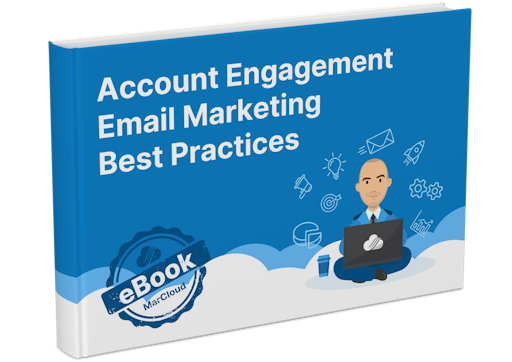While these changes are only relevant to Google and Yahoo Mail right now, it’s anticipated that other mailbox providers will follow suit.
The changes are specifically targeted at spam prevention and providing a better user experience in the inbox. They address how email senders set up and send emails but also crack down on the ability for recipients to unsubscribe.
In a statement, Neil Kumuran, Group Product Manager for Gmail Security and Trust said:
“We firmly believe that users worldwide deserve a more secure email environment, with fewer unwanted messages for an improved overall experience. We look forward to working with peers across the industry to boost the adoption of these email standards that benefit everyone.”
The good news is that some of the measures mentioned are already in place for users of Marketing Cloud Account Engagement (formerly Pardot). Especially if you’re following Pardot email marketing best practices, such as reviewing your spam analysis and email deliverability.
What are email sender guidelines?
The guidelines provided by major email providers such as Google are intended to help ensure messages are delivered to recipients as effectively as possible and in effect, protect those recipients from fielding spoofing or fishing messages, as well as general spam.
As the name suggests, they exist to guide email senders on requirements for authentication, subscriptions, formatting, sending practices, and troubleshooting.
In short, great email marketers should be across the latest email sender guidelines.
Free Email Marketing Guide
If you find the process of planning, creating, and sending emails in Pardot overwhelming or too time-consuming, this ebook is for you.
- Best-practice email design
- Transactional vs marketing emails
- Email testing tips & tricks
- Where to begin
- Getting setup in MCAE
- Managing data

What are the latest changes?
There are three main updates:
Requirement to authenticate email using SPF, DKIM, and DMARC.
Provide an unsubscribe link with a single-click opt-out.
Keep spam rates below the 0.3% threshold that has been set by Google and Yahoo.
The changes affect organisations sending 5000+ emails in 24 hours to Gmail and Yahoo mailboxes. For Google, this will include googlemail.com, gmail.com, and Google.
Time to check your account settings
As mentioned earlier, being an Account Engagement user means a lot of the actions relating to the guidelines are already in place (thank you Salesforce!). However, you will need to check your domain configuration as follows.
Authenticate your emails
Review your domain settings in Account Engagement and make sure that SPF and DKIM are set up correctly - this should be denoted with a green tick to show verification:

We’ve written an entire blog post dedicated to setting up your Pardot domain, including SPF and DKIM, in line with best practice.
To view your domain setup in Account Engagement, go to Account Engagement Settings > Domain Management.
For the best chance of avoiding your emails being automatically marked as spam, it’s advised that in addition to SPF and DKIM, you also set up DMARC. For this, you may need to ask your IT team for assistance but there are Salesforce guidelines here.
DMARC or ‘Domain-Based Message Authentication, Reporting & Conformance’, allows the domain owner to define the usage policy for how unauthenticated mail is processed, which is important for helping to protect your brand.
If you want to test your email authentication you can use tools such as Mail Tester. This will provide you with an email that you can use to set up a prospect record for testing purposes and reuse in the future to check that you are maintaining deliverability.
Check your unsubscribe link
The email sender updates say that you have to provide a single-click ‘Post’ method to unsubscribe and that this must be available in the header of the email. So if you’ve ever tried hiding the link away in the footer to bring down your unsub rate, you’re out of luck.
Thankfully, Account Engagement already takes care of this and provides an unsubscribe link in the email header by default - so there should be no action required.
For other unsubscribe and email preference links that are used in the content of your emails, these can remain as they are and can be a two-stage process.
To help maintain your deliverability, it’s vital to have a list hygiene process and to ensure your prospects are still active and relevant to the messages you are sending them.
Reducing spam rate
Google states that your email spam rate should never be greater than 0.3% and ideally, lower than 0.1%. If you’re sending the right emails, to the right people, this shouldn’t be a problem.
To keep your spam rate in check:
Proactively maintain your email lists and opt-in process, including customising your preference centre.
Carry out routine data hygiene checks and stay on top of prospect mailability.
Segment your Pardot database and send only highly tailored, relevant emails - key for engagement and reducing unsubscribes too!
Adhere to the sender guidelines in the ways you format and write emails.
In general, these updates shouldn’t be a cause of concern for marketers and should instead be treated as welcome improvements that benefit both sender and receiver alike. Better, more explicit guidelines, means it’s easier for senders to reach a prospect’s inbox and keep them engaged.
For a full guide to best practice Pardot email marketing, download our eBook and when it comes to sending, double-check your campaigns against our Essential Pardot Email Marketing Checklist.

Jonathan Chowdhury
Jon has over 20 years’ experience in digital marketing, and in Pardot for almost 10 years across the B2B, charity, and education sectors. He loves to create marketing solutions that exceed expectations and strives to bridge the gap between marketing and sales teams to ensure relationships are always successful. He’s a certified Pardot consultant and Lead Consultant at MarCloud.
More by Jonathan ChowdhuryFeatured resource

Pardot Email Marketing Best Practices
If you find the process of planning, creating, and sending emails in Pardot overwhelming or too time-consuming, this ebook is for you because understanding everything you need to know and do to ensure successful and effective email marketing activity is no easy feat.
Download now



